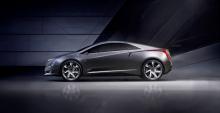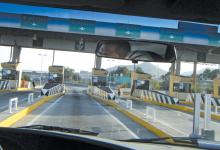In this second of a two-part article, Jack Opiola, demonstrates that the imposition of a government provided GPS mandate to levy mileage tax could be eliminated by offering motorists transparent choices regarding their manner of compliance. The key to a mileage tax system without a GPS mandate is through offering motorists choices. Most motorists are consumers who are comfortable with selecting products and services from among options available in the marketplace. A mileage tax can be built upon this realit

Jack Opiola
In this second of a two-part article, Jack Opiola, demonstrates that the imposition of a government provided GPS mandate to levy mileage tax could be eliminated by offering motorists transparent choices regarding their manner of compliance.
The key to a mileage tax system without a GPS mandate is through offering motorists choices. Most motorists are consumers who are comfortable with selecting products and services from among options available in the marketplace. A mileage tax can be built upon this reality. As seen in the diagram, one choice might be via a simple timing circuit that records vehicle run time. A second could be based on elapse-engine run time, for example sensors that record when the engine is running by vibration or electrical output from the vehicle generator. Still yet another option could be initiated via user declaration of distance travelled. This method would typically be by reference to the vehicle odometer, and simply involve recording the odometer reading, either by the driver or a third party, periodically during the tax year. Alternatively, it could be read automatically and transmitted to the taxing authority on a routine basis, either according to a schedule (every day at 2am) or threshold events (every 5,000 miles/8,000km).A mileage tax system can offer motorists several choices for reporting mileage and paying the tax. Firstly, distance driven could be pre-paid by the user. This would mean an initial odometer reading and the purchase of mileage blocks in rounded categories. For example, mileage could be pre-purchased in blocks of 1,000, 5,000, or 10,000 miles (1,600, 8,000 or 16,000km). The vehicle concerned would always have to be within a tolerance of no more than 500 miles (800km) of the pre-paid total, or risk being fined. In today’s world, the distance could be readily monitored, and mileage topped up through on-board internet services, personal laptops and home computers, or through smartphone based applications. The mobile telephone or smartphone application can communicate to the vehicle via an OBD-II (on-board diagnostics) port device using
Some may prefer to report their total mileage directly from the vehicle’s odometer system, in either an automatic or assisted manner. The automatic option would require an embedded vehicle communication system linked to the vehicle’s odometer and relaying externally to the cloud or to a specific Internet address for collection of vehicle mileage. The alternative would be an assisted mode whereby the user could use the vehicle’s OBD-II port and local communications to a Bluetooth device such as a smartphone. In this case, the odometer would relay the cumulative mileage, which could be read by the smartphone, either directly or indirectly through an OBD-II port device. Once received by the smartphone application, it could be transmitted through the 3G or 4G wireless network to the cloud, or directly to the back-office system.
Outside GPS automatic solutions, the key to assessing distance driven is currently the odometer reading in the vehicle. In research on the subject, the author has collected a number of data points suggesting that vehicle odometers vary to a greater or lesser extent. The norm appears to lie between 4% and 6% of the actual distance travelled. In some cases, much higher variances are recorded in areas of wet/icy roads and mountainous terrain.
This has not represented a problem to date, as odometers have been essentially used to provide a rough indication of a vehicle’s wear and tear. For these purposes, the tolerances are, and can be, fairly forgiving. For example, when purchasing a used car, it does not make too much difference to the new owner if there are 100,000 miles (160,000km) or 120,000 miles (192,000km) on the odometer? The indicated wear and tear is not that sensitive to the exact miles travelled. On the other hand, when collecting revenue for every mile travelled, a difference of 20,000 miles (32,000km) represents a sizeable potential loss of revenue for the State and Federal Governments, or a gross overpayment on the part of the consumer.
GPS, in comparison, has proven to be much more accurate for the purposes of this kind of measurement, and can consistently be within +/- 0.5% of the actual distance travelled. For a revenue collection system, such as Vehicle Mileage Tax (VMT), therefore, the tolerances of odometers will have to be made more precise, and brought closer to +/- 1% of the actual distance travelled. To achieve this, Standards and Measurement bodies will need to impose appropriate standards and calibration for vehicle odometers. This would make logical sense when considering that, in the commercial world of weights and measures, all variable charging mechanisms require such standards and calibration. By way of direct parallel, the pumps used for the distribution of fuel in service stations – under the existing fuel excise tax system - are calibrated devices; likewise the gas meters, electric meters and weight scales used in other utilities. Similar attention will need to be paid to ensuring the accuracy of odometers for the purposes of future VMT systems.
Other users may choose to use their own GPS devices, such as navigation units or smart phones, to report mileage by vehicle location. Owners of
Some people may elect to avoid technology altogether by paying a flat fee every calendar or fiscal year, covering the cost of unlimited mileage in a single VMT domain. Should the driver roam into other jurisdictions or VMT domains, this method would need to foresee appropriate additional fees. For example, in the United States, the Federal Income tax form could simply add two additional lines, one for the mileage reading by an independent source for the end of the tax year and one for the mileage reading at the start of the tax year. The simple subtraction of one entry from the other would be the taxable miles multiplied by a flat rate to itemise the tax due. Other components of the income tax would provide deductions for medical appointments, charitable work and business related miles. Hence, the equity issues are already addressed in the US Federal Income Tax reporting forms.
As shown in the diagram, the mileage tax could be developed in a manner that enables the government to apply a light touch to the collection system. With a system designed as open – not beholding to any particular technology – the marketplace would supply the necessary technology and data collection services. These would need to be duly certified, of course, to ensure that the system works consistently. Through recourse to public-private partnerships, the government could contract the tax collection function to private companies or agents. The availability of private sector competition may also drive down administrative costs. The government would merely provide oversight and certification of private sector providers to ensure fairness.
Since the underlying purpose of the mileage tax would be to secure sustainable revenues, the new collection system need not apply to every vehicle from the outset. The fuel tax continues to work quite well for larger passenger and working vehicles and could remain in place for these categories. The mileage tax should, however, immediately apply to the new highly fuel-efficient vehicles to ensure that their owners pay their fair share of roadway costs.
Earlier this year, the Oregon Legislative Assembly considered legislation to apply the mileage tax to electric vehicles and plug-in hybrids. To encourage public acceptance of these new automobile products, it was foreseen to delay the start of the proposed mileage tax until 2015 and introduce it at a transitional rate of 0.85 cents per mile, rising to 1.56 cents per mile in 2018.
Two legislative committees, with bi-partisan support, accepted the viability of the mileage tax for these new categories of vehicle. At the end of the legislative session, however, the bill stalled - not because of concerns over privacy or new government bureaucracy, but simply because it was, after all, a new tax.
Notwithstanding, it is clear that policymakers now have the ability to enact a mileage tax system that will resolve public concerns. Political steps made in Oregon this past year indicate that structuring a mileage tax system to eliminate a GPS mandate and provide motorists with choices for selection of their manner of compliance has the potential to yield an acceptable system. Such a system could also provide for greater transparency in the tax collection system – enabling vehicle owners to see exactly how much they contribute to the Federal or State highway trust funds that finance their highways and infrastructure.
Once policymakers take stock of the possibility of an acceptable mileage tax design, they should be in a better position to acknowledge that operators of the new highly fuel-efficient vehicles must be called upon to pay an equitable contribution for their use of the road system. The importance of healthy highway systems to national economies and the principle of fairness to all highway users demand it.









